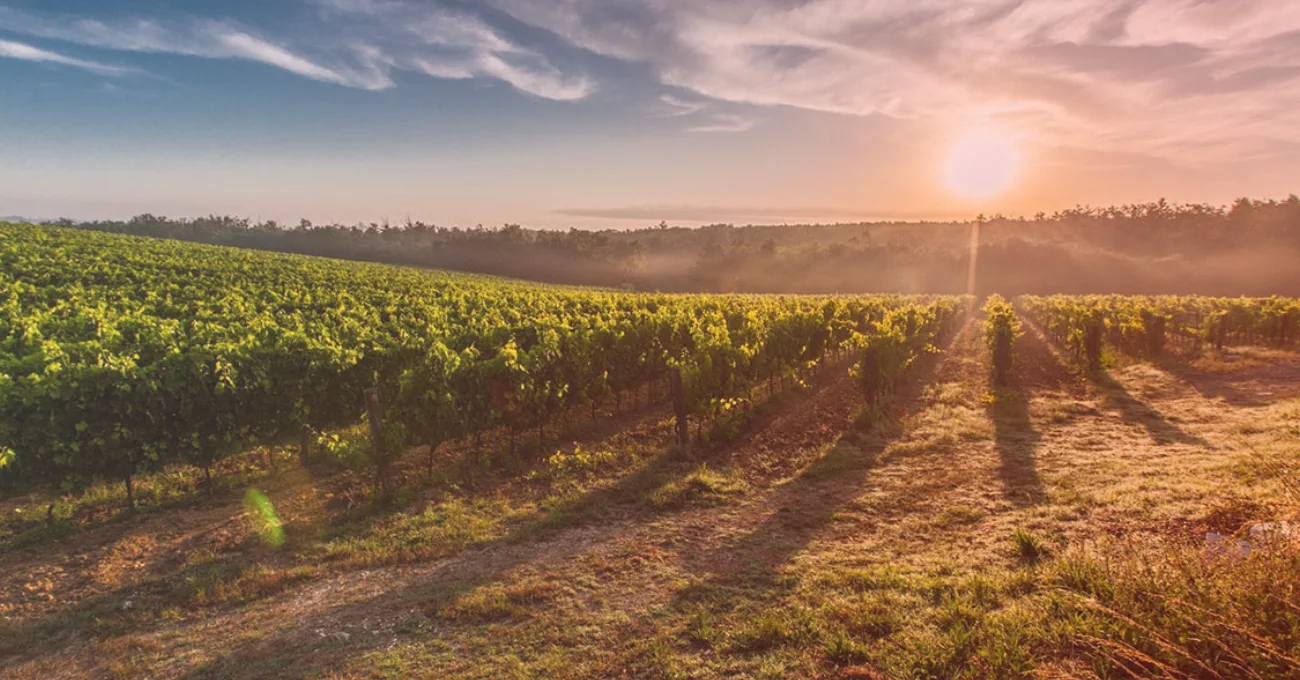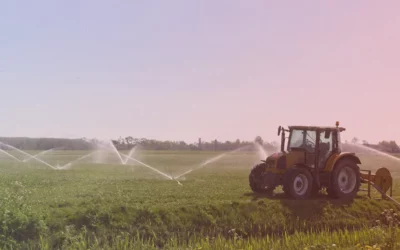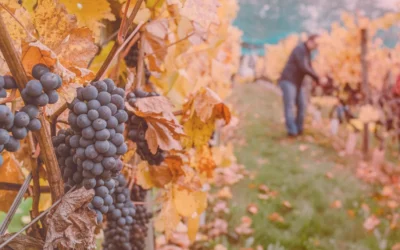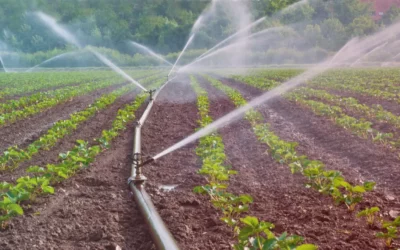Understanding Vineyard Soils and How Tech is Changing Winemaking
The winemaking community has many differing opinions on which soil is best. Conventional wisdom often repeats that sandy loam covers most bases for producing high-quality grapes, but the clay soils in Rioja have created world-class Tempranillo, and sandy soils in France have protected “a museum” of different vines from pests for well over a century.
So, the unique qualities of every location mean that understanding vineyard soils and how to test and monitor the local conditions for them is essential for each vineyard.
Climate change and the unpredictable weather it brings complicate vineyard soil management. Traditional forecasting and soil sampling methods can often leave a lot to be desired in terms of accuracy and response times to changes in conditions.
Modern smart farming technologies are being developed to fill these gaps and allow winemakers to keep up with changing weather patterns and improve their agricultural practices with real-time and accurate data.
Understanding vineyard soils
Highly-decorated wine expert and author Tom Stevenson lists over one-hundred soil types and components in The New Sotheby’s Wine Encyclopedia. Soil is so variable and multi-faceted that the combinations of qualities result in an almost infinite ability to categorize it if you look close enough. At its core, however, in winemaking, the fundamental differences in soil can be broken down into the ratios of clay, silt, sand, and loam.
- Clay – Clay consists of very small particles that settle together and retain water. It makes soil acidic, heavy to work with, and can hinder drainage when present in high amounts. Clay has good temperature stability, meaning that the soil stays cool in hot weather. It also provides potassium, a critical component for converting starches to sugars in grapes. Clay soils have good chemical exchange properties.
- Silt – Silt particles are slightly larger than clay but smaller than sand. Accordingly, their properties fall somewhere in between. Depending on the climate, silty soil has good water retention that can help or hinder vineyards. These soils can have high fertility, which may not always be good in winemaking.
- Sand – Sand has the largest particle size of the three, which results in superior drainage. While this is often a benefit to grapevines, sandy soils are prone to drying out and favor vines with deeper root systems. Sandy soils are less fertile due to lower organic matter levels, so vines grown in these soils often have cover plants or compost around them.
- Loam – Ideally, loam is a healthy mix of all three previous soil types. It provides the right amount of fertility, drainage, and water retention and is suitable for climates. This crumbly, well-draining soil has enough clay for moisture retention and enough sand for drainage but can hold onto more organic matter than vines need.
- Unique soil types – There are terms given to special combinations of minerals and soil compositions used in some of the world’s most popular vineyards. Galestro soil is a particular combination of clay soil found in Tuscany, and Crasse de fer is an iron-rich, dense layer of soil found in Libournais, in France. These are two examples of hundreds of established terms for unique soil qualities found in vineyards worldwide.
Therefore, understanding vineyard soils is an essential part of producing great wine. The different attributes of the soil’s components work in tandem with the vineyard’s microclimate and the grapevine variety’s specific needs.
How soil affects wine
In hot climates, vines benefit from the stable temperature of clay soils. In rainy regions, vines need more drainage than clay can provide. Loamy soil is forgiving of a wider range of weather conditions but may not be optimal for any specific vineyard.
Further, each soil composition’s chemical properties differ between vineyards and change over time, thus should be monitored. Clay soils provide a good chemical exchange, and fertile soils provide nutrients, but too much organic matter can favor vegetative growth and reduce the quality of the fruit.
Thus, controlling soil variables is important in terms of the stress on the grapevine that promotes fruiting over the growth of foliage.
Water-stressing grapevines
Quality grapes come from vines that have been adequately stressed, and this is a process that can be done using several methods. Water-stressing a grapevine is one of the ways of increasing the phenols and other markers of quality in grapes. Soils with high water retention or climates with a lot of rain affect the schedule and practice of water-stressing.
Grapevines are very efficient in terms of water use. Importantly, their growth patterns shift with the amount of water they receive. While heavy drought will damage the vine and dehydrate any fruit on it, restricting the water by the right amount will encourage the grapevine to shift from vegetative growth to reproductive – fruiting – growth.
In hot, dry climates, regulating this water stress is one of the ways winemakers produce high-quality grapes. After flowering, and again just before ripening, slight moisture stress avoids carbohydrate competition between leaves and grapes and allows the vine to prioritize grape production.
This method is easier in low-rainfall vineyards, with well-draining soil that can partially dry out between irrigations.
Traditionally, water stress is measured visually or by hand based on leaf temperature. These are time-consuming and subjective measures but are often adequate when performed by an experienced viticulturist. Recently, smart soil monitors are reducing the workload for modern vineyards.
The role of soil monitoring in vineyards
The attributes most commonly monitored for growing grapes are pH, organic matter, and mineral content: N,P,K; Mg; B; Zn; water and temperature retention; Cation exchange capacity (CEC); and drainage.
The first step to growing grapevines is determining the soil type and condition. Then, to maintain optimal levels of these properties in the soil, winemakers usually run manual sampling one or more times per year and send samples to a lab for analysis.
This allows farmers to establish a stable substrate for new vines; or adjust fertilizer, schedule irrigation and make other amendments for established vineyards.
Modern improvements in soil sampling
In recent years, the Internet of Things (IoT) and other smart/connected technologies, have branched out into the agricultural industry. These networked devices have been working to improve the monitoring of weather and soil conditions on a much more local and detailed level than ever before.
Smart farming is growing in popularity, and in winemaking, it offers opportunities to gather real-time data year-round without needing to take samples to the lab. Networked devices can monitor soil conditions such as moisture content and nutrients, giving farmers the ability to rapidly respond to their crops’ needs.
Smart technologies such as those provided by Benchmark Labs also provide local weather monitoring, allowing for a huge leap in accuracy for localized weather prediction. Users can act on temperature, moisture, and wind alerts from sensors placed around the vineyard.
Conclusion
Understanding vineyard soils and thus how soil affects wine are key components to producing top-quality grapes. While most growers have a preferred soil type, the requirements of the grapevine variety and the particular local weather conditions will determine which is best.
Soil monitoring is important for keeping the optimal conditions on the vineyard; while traditional monitoring practices have served people well for generations, recent technological advancements in IoT tech have allowed for a new level of accuracy and response time to the crop’s needs.
Weather and soil sampling can now be automated and analyzed to a degree never before possible, giving connected farmers the chance to stay on top of an ever-changing climate.
With grapevines, good grapes need just the right level of plant stress. With accurate and real-time data, growers can adjust these parameters to optimal to maintain healthy plants and the best-quality grapes.
——
Benchmark Labs is actively looking for winegrowers who would like to explore what we have to offer. Sign up today, or reach out to us with your inquiries!
Recent Posts
Modern Methods of Water Management in Organic Farming for 2022
[dssb_sharing_button icon_bg="#636979" _builder_version="4.16" _module_preset="default" background_color="#324155"...
How Vineyard Soil Sampling is Key to Wine Production
[dssb_sharing_button icon_bg="#636979" _builder_version="4.16" _module_preset="default" background_color="#324155"...
Factors Influencing Evapotranspiration and How to Measure it with AI
[dssb_sharing_button icon_bg="#636979" _builder_version="4.16" _module_preset="default" background_color="#324155"...




